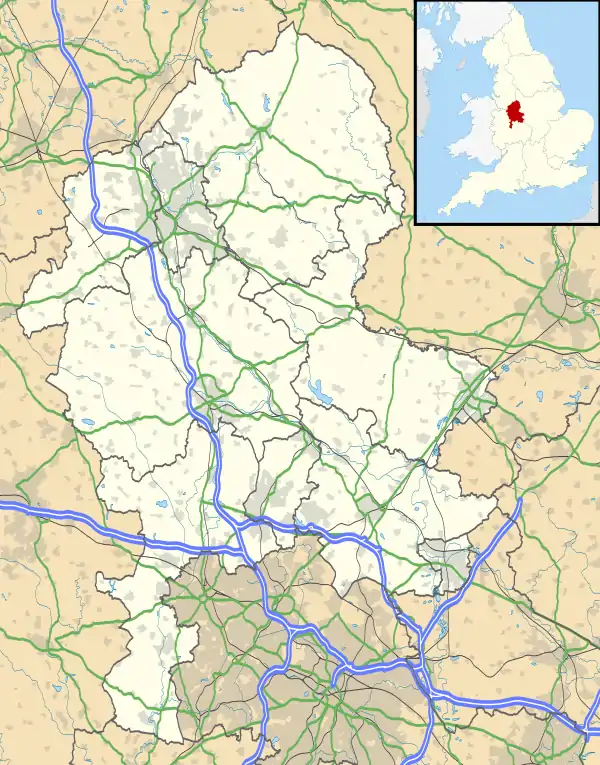Bignall Hill
Bignall Hill, Staffordshire is a local landmark, and forms part of an escarpment ridge 4 miles (6.4 km) north-west of Newcastle-under-Lyme. It is classed as a sub HuMP. There is a large stone monument on the summit which is dedicated to John Wedgwood (1760–1839), a former local employer and coal mine owner. Wedgwood's monument was initially an obelisk erected in 1850. Following storm damage in 1976 it was reduced to a quarter of its original size, although the base is still substantial. The monument is a Grade II listed building.[1] The monument is today reachable by footpaths, and is the highest point in the area. It affords sweeping 360-degree views: south to Cannock Chase and the city of Stoke-on-Trent; north across the Cheshire Plains to Jodrell Bank radio telescope; east to Mow Cop Castle and the Peak District; and west to the mountains of North Wales and Snowdonia.
| Bignall Hill | |
|---|---|
.jpg.webp) Wedgwood Monument on Bignall Hill | |
 | |
| Location | Staffordshire, England |
| OS grid | SJ820512 |
| Coordinates | 53.058357°N 2.269469°W |
Bignall Hill is in the parish of Audley Rural. Around the base of the hill are the hamlets of Bignall End, Red Street and Waterhays.
Historical facts
- A Bronze Age dagger was excavated from the hill, suggesting the possible use of the hill as an early hill fort.
- A major Roman road passed near the hill, one mile away at Red Street.
- Below the hill are the remains of the Wedgwood-owned colliery – now a nature reserve and Historic Site of Biological Interest Grade 2 – where there were notable coal mining disasters in 1836, 1874, 1895, 1911 and 1912. The employees took many strikes, notably during the First World War.
- Two criminals were executed on the hill in 1864.
References
- Historic England. "Wedgewood Monument (Grade II) (1374392)". National Heritage List for England. Retrieved 25 May 2019.